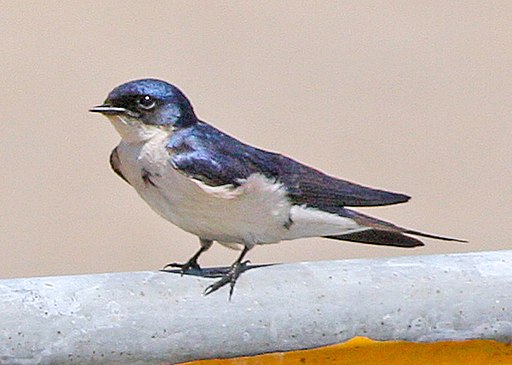Superregnum: Eukaryota
Regnum: Animalia
Subregnum: Eumetazoa
Cladus: Bilateria
Cladus: Nephrozoa
Superphylum: Deuterostomia
Phylum: Chordata
Subphylum: Vertebrata
Infraphylum: Gnathostomata
Superclassis: Tetrapoda
Cladus: Reptiliomorpha
Cladus: Amniota
Classis: Reptilia
Cladus: Eureptilia
Cladus: Romeriida
Subclassis: Diapsida
Cladus: Sauria
Infraclassis: Archosauromorpha
Cladus: Crurotarsi
Divisio: Archosauria
Subsectio: Ornithodira
Subtaxon: Dinosauromorpha
Cladus: Dinosauria
Ordo: Saurischia
Cladus: Eusaurischia
Cladus: Theropoda
Cladus: Neotheropoda
Cladus: Averostra
Cladus: Tetanurae
Cladus: Avetheropoda
Cladus: Coelurosauria
Cladus: Maniraptoromorpha
Cladus: Maniraptoriformes
Cladus: Maniraptora
Cladus: Pennaraptora
Cladus: Eumaniraptora
Cladus: Avialae
Infraclassis: Aves
Ordo: Passeriformes
Subordo: Passeri
Infraordo: Passerida
Superfamilia: Sylvioidea
Familia: Hirundinidae
Genus: Hirundo
Species: Hirundo dimidiata
Subspecies: H. d. dimidiata - H. d. marwitzi
Name
Hirundo dimidiata Sundevall, 1850
Vernacular names
Afrikaans: Pêrelborsswael
English: Pearl-breasted Swallow
español: Golondrina de pecho perlado
فارسی: پرستوی سینهمرواریدی
français: Hirondelle à gorge perlée
magyar: Hirundo dimidiata
Nederlands: Parelborstzwaluw
svenska: Pärlemorbröstad svala
References
Öfversigt af Kongliga Vetenskaps-Akademiens Förhandlingar 7 p. 107
The pearl-breasted swallow (Hirundo dimidiata) is a small swallow. It breeds in southern Africa from Angola, southern Congo and Tanzania southwards. It is partially migratory with many birds from the south west of South Africa wintering further north.
This is a bird of dry scrub, farmland and clearings. It is often found around human habitation. The pearl-breasted swallow builds a bowl-shaped mud nest reinforced with grass or hair and with a soft lining. It sometimes uses old nests of the greater striped swallow, Hirundo cucullata.
The nest may be reused in later years, and one was utilised for 30 years. The nest is built in natural cavities or man-made structures such as buildings, culverts and shafts, but its preference for isolated and abandoned buildings means that this species has not benefited from artificial sites to the same extent as, for example, the greater or lesser striped swallows.
The two or three eggs are pure white, and are incubated by the female alone for 16–17 days to hatching. Both parents then feed the chicks. Fledging takes another 20–23 days, but the young birds will return to the nest to roost for a few days after the first flight.
The pearl-breasted swallow is 13–14 cm long. It has glossy blue upperparts and grey-white underparts. The upper wings, underwing flight feathers and forked tail are blackish-blue. The underwing coverts are a darker shade of grey-white. The lack of white in the tail is a distinction from similar Hirundo species. The outer feathers are slightly longer in the male than the female. Juveniles are duller and browner than the adult, with shorter outer tail feathers.
The northern subspecies, H. d. marwitzi is darker and smaller than nominate H. d. dimidiata, but the differences are small, and the species may be monotypic.
The pearl-breasted swallow is sparsely distributed, but can be locally common. It feeds mainly on flying insects, with a fast direct flight. The call is a chittering chip cheree chip chip.
Gallery
Hirundo dimidiata 1894.jpg
References
BirdLife International (2016). "Hirundo dimidiata". IUCN Red List of Threatened Species. 2016: e.T22712336A94330127. doi:10.2305/IUCN.UK.2016-3.RLTS.T22712336A94330127.en. Retrieved 13 November 2021.
Sinclair, Hockey and Tarboton, SASOL Birds of Southern Africa, ISBN 1-86872-721-1
Turner and Rose, Swallows and Martins ISBN 0-7470-3202-5
Retrieved from "http://en.wikipedia.org/"
All text is available under the terms of the GNU Free Documentation License


